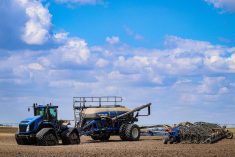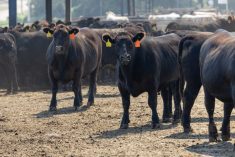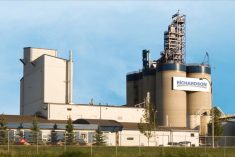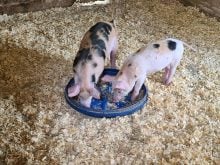A new plant growth regulator is not going to solve wheat-lodging problems in Western Canada, says an Alberta Agriculture agronomist.
Engage Agro’s Manipulator was registered in 2014 and can be used on wheat crops in Canada this year. Like other PGRs, it shortens and strengthens plant stems of plants and makes crops less likely to fall over.
Manipulator’s active ingredient is chlormequat chloride, an established PGR that inhibits the production of plant growth hormones.
Trials suggest Manipulator can boost Canada Western Red Spring wheat yields by five to 15 bushels per acre, but PGR performance is highly dependent on variety, climatic conditions and the timing of application.
Read Also
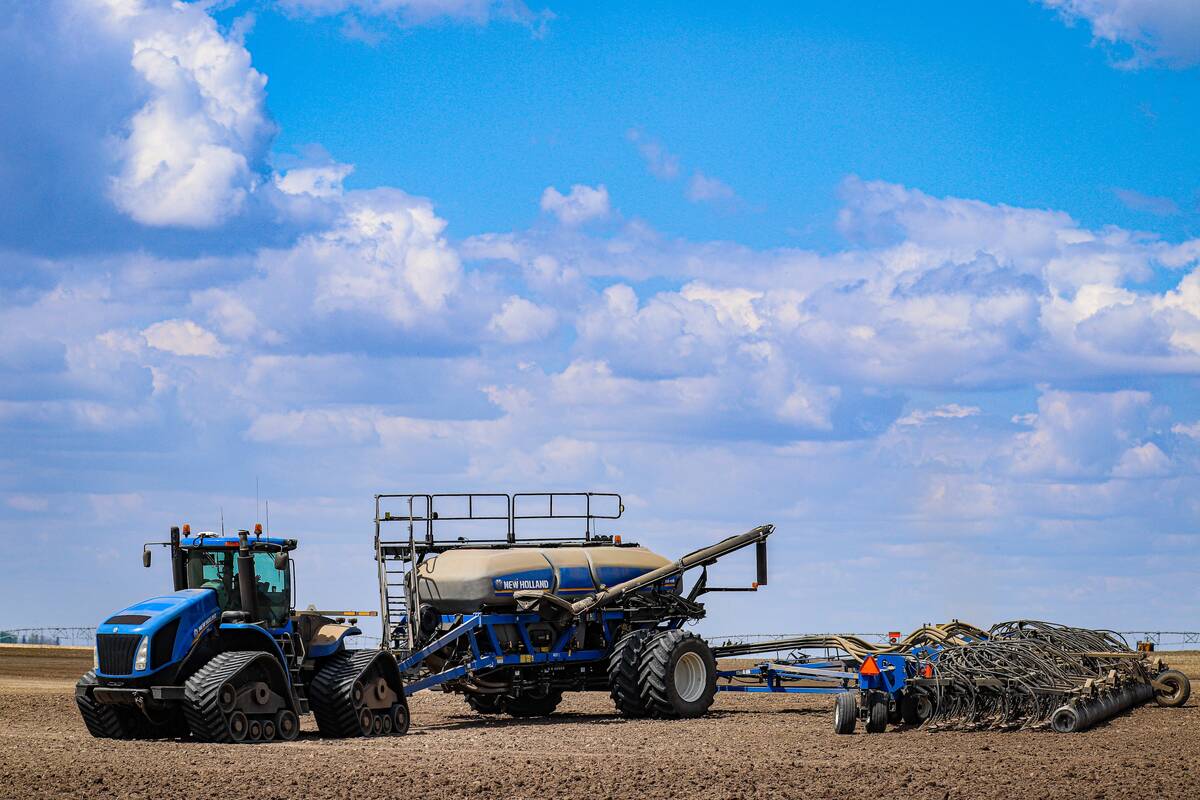
NFU says proposed plant breeders’ rights come at farmers’ expense
The National Farmers Union is pushing back against changes to the Plant Breeders’ Rights Act that would narrow the scope of farmers’ right to save seed or propagate crops from cuttings and tubers.
“The perception is out there that these are going to solve every (lodging) problem,” Sheri Strydhorst told the Manitoba Agronomists Conference in Winnipeg in mid-December.
“Companies don’t want growers having that perception, when they (companies) know … that it’s not necessarily going to perform like that.”
Strydhorst said PGRs are popular in the United Kingdom, where 90 percent of winter wheat crops receive one or two treatments during the growing season.
However, plants grow faster in Western Canada than in the U.K., which makes it tricky to apply PGRs at the right time.
“Staging is absolutely critical with plant growth regulators,” said Strydhorst.
The ideal time to apply PGRs is at growth stage 31, the beginning of stem elongation.
“When we have nice warm growing conditions, you have a couple of days to get this staging right.”
Tom Tregunno, product manager for Engage Agro, said Manipulator’s formulation allows farmers to apply the product before and after growth stage 31.
“We would prefer to get it on at that five to six leaf stage, but with Manipulator, we’ve done some work throwing it on at herbicide timing and at a flag (leaf). It still works and you just lose a little bit of efficacy,” he said.
“Manipulator’s wide application widow is a unique feature. It’s the main reason why we are having such good results.”
Tregunno said data is limited, but trial results suggest Manipulator “at flag leaf is working very well.”
Besides her concerns about application timing, Strydhorst said PGRs are also not consistent. They reduce the height of certain wheat varieties but don’t work on other varieties.
Trial data from Engage Agro indicates that Manipulator is most effective on CWRS spring wheat. Four years of plot data on CWRS varieties in Western Canada show:
• Ten percent height reduction, 83 percent of the time.
• Fifteen percent height reduction, 53 percent of the time.
• Five percent yield increase, 85 percent of the time.
• Ten percent yield increase, 55 percent of the time.
Tregunno said the size of the yield gain depends on the likelihood of lodging.
“When you see those 10 bu. increases on that chart, that’s usually because you’re seeing lodging in the untreated section,” he said.
“In the absence of lodging, you’re really only looking at a three to five bu. increase”
Manipulator is less effective on Canada Prairie Spring wheat. Trials show it increases yields by five percent only 33 percent of the time.
“We want growers to be aware of this,” Tregunno said.
“If they choose to use Manipulator on a CPS variety, they know to expect a height reduction and lodging resistance, but they may not see a yield increase compared to untreated.”
Strydhorst said weather and soil conditions can affect the performance of PGRs. The labels tell growers not to apply the products when the crop is suffering from excess water or under drought stress.
“What do we define as drought? What do we define as excessive moisture?” Strydhorst said.
“There are many unanswered questions about PGRs and more work is needed.”
Trials from Alberta indicate that PGRs may reduce yield when conditions are dry. Manipulator cut yields by about six bu. per acre compared to a check plot in test plots near Bon Accord and Falher.
Despite the need for more studies, many cereal growers are desperate for help with crop lodging, Strydhorst said.
“It (Manipulator) won’t be used on widespread acres, but in areas under irrigation in southern Alberta … they’re pushing fertility, they have the moisture, they need to improve standability.”
Tregunno said prairie wheat growers are definitely curious about Manipulator.
“The interest is a lot higher than we originally expected,” said Tregunno, who is encouraging farmers to experiment with the product this year.
“See how it works in your fields, with different varieties. We know some varieties perform better than others.”
Engage Agro hopes to register the product for barley and other cereals in time for the 2016 growing season.
Economics of lodging
Lodging can reduce wheat yields from seven to 35 percent. Based on an 85 bushel wheat crop and a feed wheat price of $3.29 per bu., losses can be:
Yield loss Bushels Lost income
(percent) lost
7 6 bu./acre $19.74/acre
15 13 bu./acre $42.77/acre
35 30 bu./acre $98.70/acre
A plant growth regulator reduces the height of plants and the risk that a crop will fall over. Engage Agro is introducing a new PGR in 2015, for wheat, called Manipulator.
• Manipulator costs $13.84 per acre at a rate of .7 litres per acre,
• Growers need an additional yield of 4.2 bu. per acre to cover the cost of the product, assuming a feed wheat price of $3.29 per bu.
Source: Alberta Agriculture





